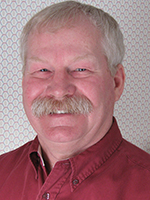
Communicating the value of your business (Jason Brandt & Jon Urness)
Click here to download Brandt and Urness’ PowerPoint presentation.
 By Jon Urness, Vita Plus national forage specialist, with Jason Brandt, J&A Forage Services
By Jon Urness, Vita Plus national forage specialist, with Jason Brandt, J&A Forage Services
Sometimes custom harvesters need to remind their customers of the value they bring to the table when it comes to producing a supply of quality, consistent forages. As uncomfortable as it may be to do that, communication during the off-season can go a long way toward being on the same page with harvest clients.
 Jason Brandt of J&A Forages Services in Mt. Joy, Pennsylvania was featured in a breakout session at the recent Vita Plus Custom Harvester Meeting and outlined some tactics he uses to harvest top-notch forages, maintain communication with his clients, and add value to the services he provides.
Jason Brandt of J&A Forages Services in Mt. Joy, Pennsylvania was featured in a breakout session at the recent Vita Plus Custom Harvester Meeting and outlined some tactics he uses to harvest top-notch forages, maintain communication with his clients, and add value to the services he provides.
Because the majority of Brandt’s business is corn silage, he prides himself on making sure kernel processing is done correctly. For a number of years, Brandt did double duty as a dairy producer and a custom harvester, so he has great insight into what dairy producers want. To that end, he took kernel processing seriously even before it became fashionable to do so.
Brandt insists he doesn’t do anything special to achieve optimum processing and hasn’t invested in novel technology to get the job done either. Instead, he keeps processing rolls in good condition. They must be sharp and not worn round. In addition, the belts to the processing unit must be in excellent condition to prevent slippage. Brandt also experimented with roll speed differential and is convinced that a differential approaching 40 percent is needed.
Beyond all of that, Brandt says it is critical to pull out the processing unit on a regular basis to inspect roll condition and gap. Depending on conditions, that setting may be as tight as 1.5 to 0.75 millimeters. As a result, Brandt is very disappointed if processing scores come back below an optimum score of 70 percent. Most results are above that.
In the off-season, Brandt communicates with his clients on a regular basis. Sometimes it’s done informally and sometimes it’s more formal as he takes measurements of packing density and other silage parameters. Last year, he conducted a packing density survey with many of his clients and communicated the results to them.
This winter, he will take his survey to a higher level by adding data fermentation and aerobic stability measured by temperature probe and infrared imaging, as well as calculating feedout rates and kernel processing scores. This more comprehensive survey will include a report for the producers with a relative grade assigned to each parameter.
Because of the extra effort to get the job done right during harvest and his time spent in the off-season, Brandt admits that his harvest rate is a little higher than some of his competitors. Those competitors generally aren’t dairy producers, so they may not have the clear understanding of what clients need.
To justify his higher rate, Brandt put together a technical bulletin to remind customers of the value of optimally processed corn silage. He used data from Jim Ferguson at the University of Pennsylvania. Ferguson’s work suggests moving from the lower end of adequately processed kernels to optimally processed kernels can be worth 2 pounds of milk or more. On a per-head-per-day basis, that’s 30 to 40 cents depending on milk price. Even at $1-per-ton added harvesting cost, that’s only 2.5 cents per head per day when feeding 50 pounds of corn silage as fed.
| Category: |
Business and economics Forage Foundations |

